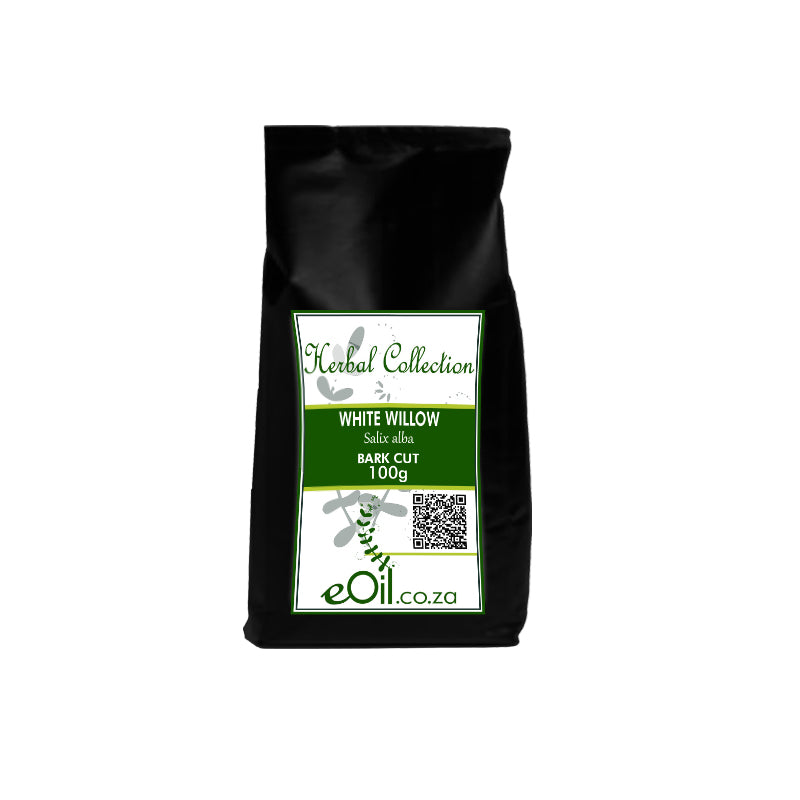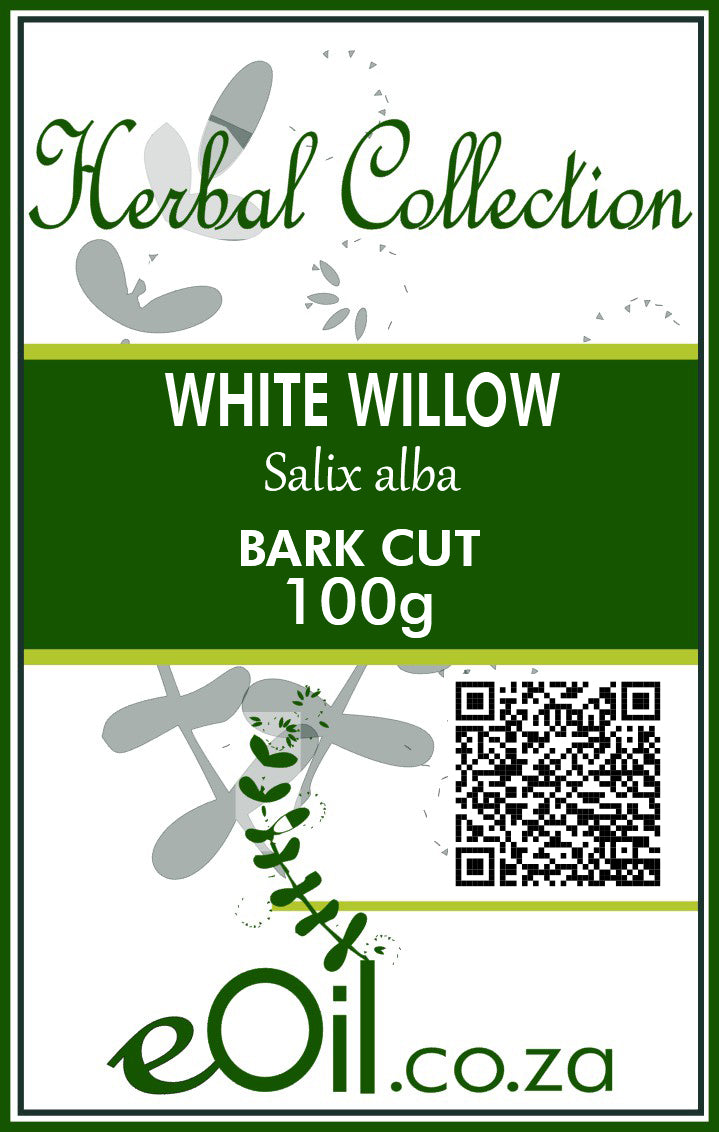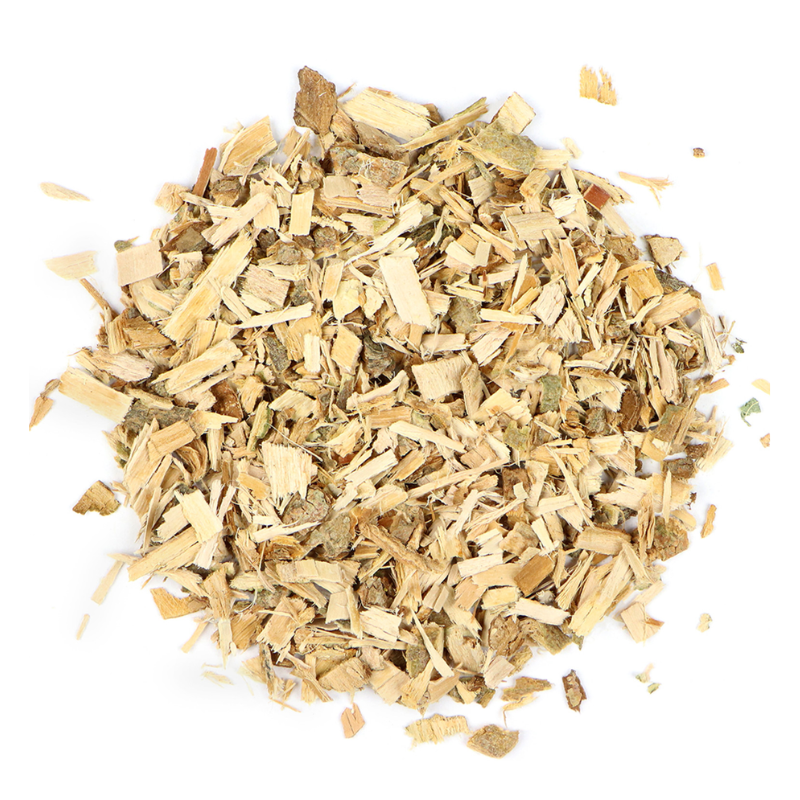White Willow Bark Dried (Salix alba) - Herbal Collection
White Willow Bark Dried (Salix alba) - Herbal Collection - 100 GR is backordered and will ship as soon as it is back in stock.
Description
Description
White Willow Bark Dried ( Salix alba ) - 100 g - Herbal Collection
Dried white willow bark (Salix alba) is a traditional herbal ingredient known for its potential benefits.
It has been used historically in various cultures for its natural properties and is often prepared as a tea or infusion.
White willow bark contains naturally occurring compounds, such as salicin, which some believe may offer supportive effects.
For in depth information check tabs below
TRADITIONALLY USED FOR
May help with
- Headache
- anti-inflammatory
- analgesic
- mild fever
- cold & flu
INFORMATION
Source : http://www.wikiphyto.org/wiki/White Willow
Reference on http://www.wikiphyto.org
Translation in English by Google Translate (go to the page of the source linked | on Chrome cellphones go on the 3 dots on the top right and select translate in your preferred language | on laptop right click your mouse and select option translate when hoovering on the page
plant name
White willow, White wicker
International Latin denomination
Salix alba L. and Salix purpurea L.
botanical family
Description and habitat
- Common dioecious trees in wetlands across Europe
- Twigs flexible when young, with alternate leaves, elongated to lanceolate, with a short petiole and a finely serrated edge
- Unisexual flowers grouped in erect catkins, and carried by different feet (male flowers with yellow stamens, female flowers with 2 green carpels)
History and tradition
- Willow branches provide osier (especially Salix viminalis , non-medicinal)
- Bark from 2-3 year old branches is harvested for medicinal use
- There are many species, all more or less medicinal provided that the minimum salicoside content is 2% (Pharmeuropa)
- Salix purpurea is the richest
- The first mention of the properties of willow bark appears to have been made by Edward Stone in 1763 [1]
- Salicoside was isolated in 1830 by Leroux after Serfaty described its activities in 1908
- Willow bark has been used as an analgesic and antipyretic since ancient times, so the history of the discovery of aspirin goes back more than 3,500 years [2]
- The medicinal use of willow bark dates back to Galen.
- Greek and Chinese medicine (weeping willow)
- Willow water is a preparation to facilitate plant cuttings (like auxin , a plant hormone)
- Fabrication :
- Crush a few willow twigs (all species combined) with a hammer, soak for 24 hours in water. Dip the stems of the plant before cutting them.
- Best recipe: soak a few willow cuttings in a basin of water for 4 to 5 weeks. The liquid remaining in the basin leaves a sort of slippery gel on the fingers. This liquid facilitates the cuttings or layering of any plant and strengthens weakened trees.
- Willow water promotes rhizogenesis (root formation and development)
- Fabrication :
Parts used
- Bark (catkins)
Dosage forms available
- Bark tincture
- Bark EPS
- Dry extract
- Bark decoction
Usual dosages
- 60 to 120 mg of salicoside
- 2-3 grams of drug in cold water, bring to a boil, strain after 5 min
Composition
Main components of the plant
- Salicylates (1.5 to 11%), flavonic and heteroside derivatives of the salicoside group (= salicin , glucoside of salicylic alcohol ), salicortin , fragiline , populin , salireposide , tremulacin
- Phenolic compounds (glycosides of phenols and phenol acids ): triandrin , vimaline and aromatic derivatives, saligenin (= salicylic alcohol ) , syringic aldehyde , salicylic acid , para-hydroxybenzoic acid , caffeic acid , ferulic acid , p-coumaric acid
- Flavonoids : quercetol , luteolin , eriodictyol , naringenin , ampelopsin ( flavanolol ) and isosalipurpuroside ( chalcone ) glycosides
- Tannins : dimer and trimer proanthocyanidols (8 to 20%)
Main components of buds or young shoots
Main components of essential oil
Properties
Plant properties
- Anti-inflammatory [3] , by action on IL-1 beta and NF kappa B [4] , reduction of IL-6 and TNF-α ( apigenin , quercetin ) [5] , reduces infiltration polymorphonuclear cells, smoothes synovial mucosa, protects against osteophyte formation, decreases soft tissue swelling and bone resorption, reduces levels of inflammatory mediators [6]
- Analgesic [7] , [8] , [9] , antipyretic, antirheumatic
- Antiseptic
- Like aspirin, salicylic acid inhibits cyclo-oxygenase COX-1 and COX-2, decreases the biosynthesis of prostaglandins E1 and E2, but less on the synthesis of thromboxane A2, which makes it less anti-platelet aggregation
- Kittens have a nervous sedative action and calm uterine pain, perhaps due to the presence of estriol (?)
Bud properties
- Willow buds from Salix caprea goats have antioxidant activity, and inhibit excessive catecholamine secretion under stress conditions [10]
Properties of essential oil
Indications
Indications of the whole plant (phytotherapy)
- Mild fevers, among others of influenza origin
- Coolings
- Rheumatism and joint pain [11] , rheumatic attacks
- Evil of two [12]
- Various pains, dysmenorrhea, headaches, dental pain, etc.
Indications of the bud (gemmotherapy)
Specific indications of essential oil (aromatherapy)
Known or suspected mode of action
- The anti-inflammatory properties are linked to salicylic acid which is formed by intrahepatic oxidation of salicylic alcohol ( saligenin ), itself resulting, at the intestinal level, from the hydrolysis of native salicoside or the slow degradation of the salicortin (which are the “prodrugs” of salicylic acid ) absorbed at + 86%
- Absorption is slowed by the presence of populin and tremulacin
Usual formulations
Regulations
- French Pharmacopoeia list A (stem bark, leaf of Salix sp .)
Possible side effects and precautions for use
- Few present due to low salicylates content
- The possible gastrointestinal disorders would be due to the tannins
- Salicylate allergies cannot be excluded (in 0.2% of the population)
- Caution, do not use in patients taking anticoagulants or antiplatelet agents [13]
- Interactions with warfarin [14]
Bibliographic references
- Go↑ Edward Stone (1763). An account of the success of the bark of the willow in the cure of agues. In a letter to the Right Honourable George Earl of Macclesfield, President of R. S. from the Rev. Mr. Edward Stone, of Chipping-Norton in OxfordshirePhil. Trans. R. Soc.53195–200 http://doi.org/10.1098/rstl.1763.0033
- Go↑ Desborough MJR, Keeling DM. The aspirin story - from willow to wonder drug. Br J Haematol. 2017 Jun;177(5):674-683. doi: 10.1111/bjh.14520. PMID 28106908
- Go↑ Sarwar Beg, Suryakanta Swain, Hameed Hasan, M Abul Barkat, Md Sarfaraz Hussain. Systematic review of herbals as potential anti-inflammatory agents: Recent advances, current clinical status and future perspectives. Pharmacogn Rev. 2011 Jul-Dec; 5(10): 120–137. texte intégral
- Go↑ Mehdi Shakibaei, David Allaway, Simone Nebrich, Ali Mobasheri. Botanical Extracts from Rosehip (Rosa canina ), Willow Bark (Salix alba), and Nettle Leaf (Urtica dioica ) Suppress IL-1β-Induced NF-κB Activation in Canine Articular Chondrocytes. Evidence-Based Complementary and Alternative Medicine Volume 2012, Article ID 509383, 16 pages doi:10.1155/2012/509383 texte intégral
- Go↑ Drummond EM, Harbourne N, Marete E, Martyn D, Jacquier J, O'Riordan D, Gibney ER. Inhibition of proinflammatory biomarkers in THP1 macrophages by polyphenols derived from chamomile, meadowsweet and willow bark. Phytother Res. 2013 Apr;27(4):588-94. doi: 10.1002/ptr.4753. PMID 22711544
- Go↑ Sharma S, Sahu D, Das HR, Sharma D. Amelioration of collagen-induced arthritis by Salix nigra bark extract via suppression of pro-inflammatory cytokines and oxidative stress. Food Chem Toxicol. 2011 Dec;49(12):3395-406. DOI: 10.1016/j.fct.2011.08.013 PMID 21983485
- Go↑ Schmid B, Lüdtke R, Selbmann HK, Kötter I, Tschirdewahn B, Schaffner W, Heide L. Efficacy and tolerability of a standardized willow bark extract in patients with osteoarthritis: randomized placebo-controlled, double blind clinical trial. Phytother Res. 2001 Jun;15(4):344-50. PMID 11406860
- Go↑ Soeken KL. Selected CAM therapies for arthritis-related pain: the evidence from systematic reviews. Clin J Pain. 2004 Jan-Feb;20(1):13-8. PMID 14668651
- Go↑ Alessandro Bartolini, Lorenzo Di Cesare Mannelli, Carla Ghelardini. Analgesic and Antineuropathic Drugs Acting Through Central Cholinergic Mechanisms. Recent Pat CNS Drug Discov. 2011 May; 6(2): 119–140. texte intégral
- Go↑ Calorio C, Donno D, Franchino C, Carabelli V, Marcantoni A. Bud extracts from Salix caprea L. inhibit voltage gated calcium channels and catecholamines secretion in mouse chromaffin cells. Phytomedicine. 2017 Dec 1;36:168-175. doi: 10.1016/j.phymed.2017.09.006. PMID 29157811
- Go↑ Chrubasik S, Pollak S. Pain management with herbal antirheumatic drugs. Wien Med Wochenschr. 2002;152(7-8):198-203. PMID 12017748
- Go↑ Vlachojannis JE, Cameron M, Chrubasik S. A systematic review on the effectiveness of willow bark for musculoskeletal pain. Phytother Res. 2009 Jul;23(7):897-900. PMID 19140170
- Go↑ Altınterim, Başar. (2013). Effects of Willow Bark (Salix alba) and Its Salicylates on Blood Coagulant. Karaelmas Science and Engineering Journal. 3. 37-39. 10.7212/zkufbd.v3i1.101.
- Go↑ Heck AM, DeWitt BA, Lukes AL. Potential interactions between alternative therapies and warfarin. Am J Health Syst Pharm. 2000 Jul 1;57(13):1221-7; quiz 1228-30. PMID 10902065
- Wichtl Max, Anton Robert. Therapeutic plants: Tradition, officinal practice, science and therapy. Ed. Tec & Doc. Cachan. 1999. P 491
CAUTION
Store in a cool, dry place, away from light. Keep tightly closed, away from the reach of Children and pets.
Do not exceed the daily dose.
This product is not intended to prevent or cure any form of illness or disease.
If you are pregnant or nursing ; If you have a medical condition or are in the course of medical treatment ; If you are programmed for theater/operation in the near future, please consult your healthcare practitioner before using this product.
This product cannot replace a varied and balanced diet and a healthy lifestyle.
This product has not been evaluated by the SAHPRA for its quality, safety or intended use.
For More Information please check our General Safety Herbal products Page

White Willow Bark Dried (Salix alba) - Herbal Collection - 100 GR is backordered and will ship as soon as it is back in stock.






